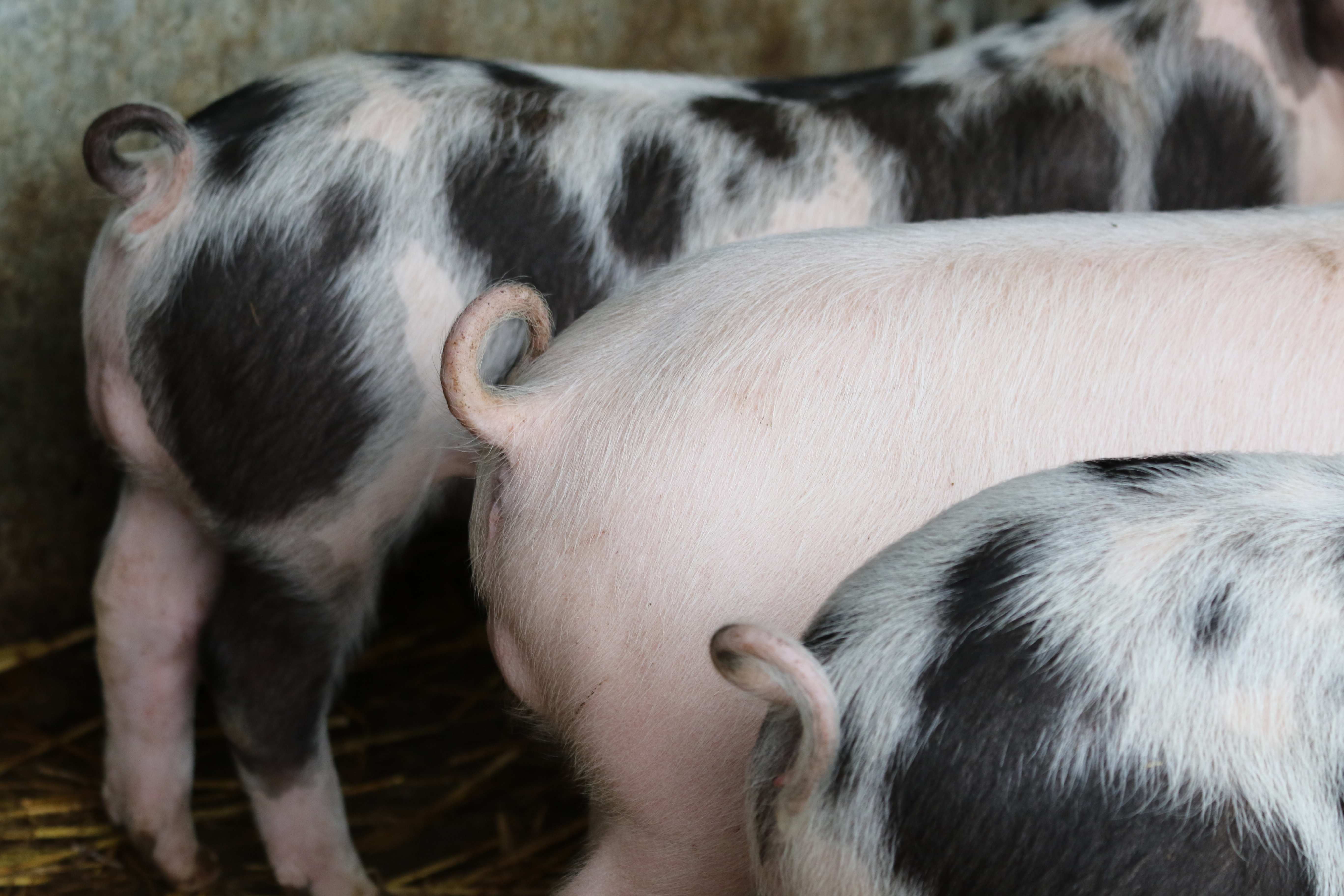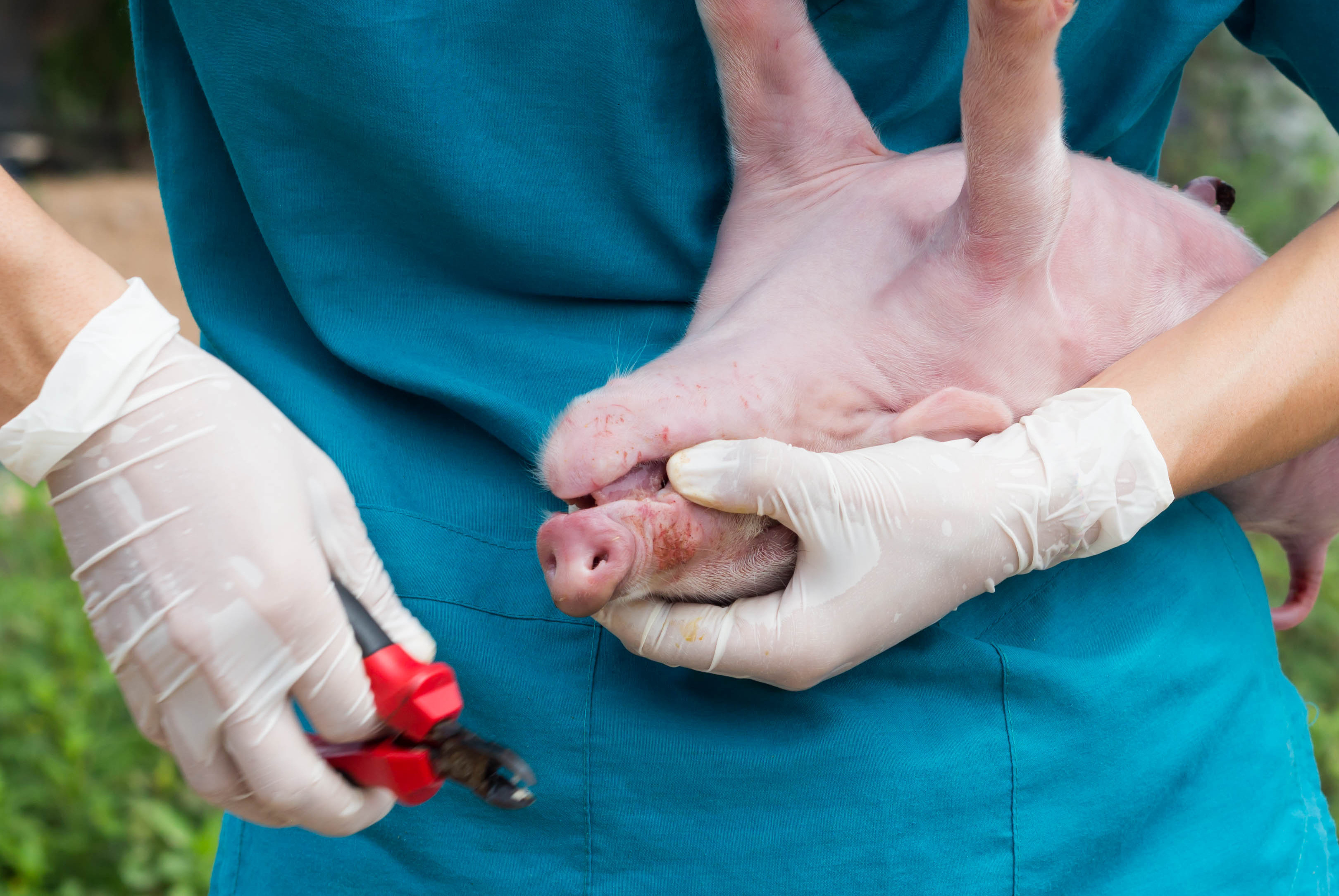



Rewarding the progress of the global pig industry
With the recent publication of the second Global Business Case for swine welfare, we ask Global Advisor for WAP Kate Blaszak on the progress of the scheme so far.World Animal Protection released its second Global Business Case for higher welfare for pigs raised for meat this month, which details the progress of the scheme and the successes of working together with pig producers worldwide. We spoke to Kate Blaszak, global advisor for swine welfare, about the latest report.
What were the aims of WAP when first establishing the Global Business Case?
We primarily wanted to showcase successful commercial solutions to industry (producers and retailers) from a range of geographies, businesses and scales, in the words of farmers and businesses. We wanted to encourage and illustrate the benefits of peer-to-peer learning and case studies as we believe this to be more effective in finding viable solutions to issues on farm.

So far, has WAP met those aims? Where have you seen the most progress?
The Global Business Case (pigs raised for meat) focuses on that progress where it is feasible to document.
Surgical castration
- In Latin America, 65 percent of male pigs in Brazil and 90 percent in Colombia are immunocastrated and this is growing in Mexico and Argentina too. This region is far advanced on this matter when compared to Europe and the US, for example. We have seen a cohesive response by the industry and the move to immunocastration has been well accepted. This said, Belgium is leading in the EU with retailers leading the way by accepting pork from either intact males and/or immunocastrated males.
Tail docking
- Europe is leading the way in ending routine tail docking, specifically in Finland and Sweden. There is also a growing movement in the Netherlands in developing practices to avoid tail docking and to minimise tail biting, with a range of improvements particularly focused on providing effective enrichment. In Thailand, Betagro has also made good strides.

Teeth clipping
- Europe has mostly phased out this practice (at least in Western Europe) and Latin America are taking big steps to phasing it out. Specifically the two largest companies in Brazil and the largest company in Colombia are making efforts to end this practice.
Ear notching
Early weaning
- Sweden is a stand out for best practice. This has correlated with regulation for a minimum 28 days weaning and significant reduction in antibiotic use as a result. Brazilian companies, and increasingly some in Thailand (and even China, though this is not in the report) are finding that weaning at least 25 days is more commercially beneficial as a result of better welfare and more robust piglets.
What are your primary focuses for swine welfare in 2019 beyond?
As we continue to encourage retailers and producers to phase out sow stalls (and avoid building them in the first place with new builds), we also emphasise the importance of providing effective enrichment for all pigs to express natural behaviour and as part of the solutions for sows and pigs raised for meat.
Avoiding painful procedures is the next major emphasis (see information on the 3Ts initiative) – as consumers are really shocked and disturbed by these procedures and associated impacts on piglets (and growing pigs) which can actually be avoided.
Benefits to all include better performance and reputation, reduced antibiotic use and resistance development, and of course animal welfare and consumer confidence. Encouraging later weaning and enriched free farrowing are also an important part of our continued work.
How has WAP found working directly with producers on manageable ethical and sustainable solutions and what feedback have you received from producers?
The producers involved in the GBC are all voluntary and willing. They are either initiating these improvements themselves or have done so after our collaboration or encouragement. They review, trial, adapt and then upscale. They discuss the barriers, and challenges along the way as well as the benefits, and learnings are shared (as appropriate) for best practice. They share this feedback, in their own words in the GBC.
Producers have reported that they have found a range of benefits associated with improved production, reduced antibiotic use, avoiding undesirable tasks, improved worker skills, other production benefits from addressing the underlying issues that low welfare practices mask, and brand reputation. Where relevant, we have discussed improved scoring with the BBFAW (bbfaw.com).
Many consumer research projects have yielded similar conclusions on the concerns of consumers regarding animal welfare and food safety with both of those subjects being reported as high priority on shoppers’ minds. This said, it has also been reported that when it comes to making that all-important buying decision, a majority of consumers will buy based on price and not their moral standing. What are your thoughts on this?
Whether higher welfare products are available and promoted with adequate education/ marketing, and ideally certification, can impact consumer decisions and willingness to pay – studies show this. Willingness to pay has been studied and translated well to purchasing behaviour in several existing markets. However, consumer behaviour is also about the options available and increasingly, mainstream consumers expect key welfare requirements which actually don’t necessarily cost more to the producer or consumer. Increasingly, consumers expect that higher welfare will become a mainstream attribute in their market and replace low welfare products – so the choice is automatic and part of basic product quality and sustainability.
What do you think could be done differently to change such consumer behaviour?
Retailer commitments for mainstream responsible sourcing with higher welfare. We need to see commitments that lead the way, implement over a time frame and recognise the value of higher welfare, the work that major producers have already embraced and the interest of their customers. More education - instore, online and marketing - as well as reporting on progress against commitments made. Consumers do value this and reward it with loyalty.









